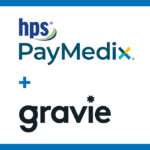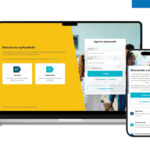
Medical Economics
Jonathan Moss, MBA, FHFMA | January 25, 2024
As health insurance premiums, copays, and deductibles rise, health insurance is providing less of the financial safety net American families have come to expect. According to the Milliman Medical Index, last year, the cost of health care for a hypothetical family of four with employer-sponsored health insurance was more than $31,000, and the family’s share of that was nearly $13,000, including premiums and out-of-pocket (OOP) costs. This was 5.6% higher than the previous year, and the rising trend is only expected to continue. Historically, provider bad debt was largely driven by the unemployed and uninsured population, but today’s provider financials are different. Now, according to Crowe RCA Benchmarking Analysis, 58% of provider bad debt is from patients with health insurance – a five times increase in three years.
Beyond the collection challenges, the inflated OOP trend is a growing concern for primary care physicians (PCPs) because rising OOP expenses push patients on tight budgets to make difficult choices, particularly in delaying or avoiding routine health care appointments. While preventive care visits are fully covered under most insurance plans, many now worry about unexpected costs resulting from those visits. Research shows that 52% of insured Americans found that paying for medical bills has been stressful. In addition, nearly all of those with concerns (92%) claimed the stress has affected their physical and mental health.
Many patients are simply not returning to primary care post-pandemic. Just a third of Americans (34%) have visited their primary care doctor in the past year, with 53% citing out-of-pocket costs as their primary concern, according to a survey conducted by OnePoll for Assurance IQ. The Kaiser Family Foundation also reported that more than one in four adults reported delaying or going without medical care, prescription drugs, mental health care, or dental care due to cost. Deferral of routine primary carevisits can have long-term health implications for patients. This also has major implications for PCPs working within a value-based environment. Managing a patient population with significant financial barriers to receiving care presents a significant challenge and likely undermines the intent of many value-based contracts.
Rising health care costs are also negatively impacting the patient/PCP relationship. As insured Americans shoulder more of the cost burden, many providers have deployed various financial tools and approaches – from upfront collections to reminder calls to enrolling financially-stressed patients in credit-bearing products. Many of these tactics exacerbate the tension and alienate patients, driving them to make imprudent medical decisions such as delaying necessary care due to cost concerns.
A new way forward
While rising out-of-pocket health care costs pose serious challenges, a promising solution exists to enhance affordability and access to health care. New payment models are emerging, bridging patient payment gaps by ensuring upfront payments to PCPs while offering patients more affordable repayment plans without additional fees. These models shift the financial relationship away from PCPs to specialized services that streamline the payment process.
Some models provide low- to no-interest credit for out-of-pocket costs and construct payment schedules based on individual needs, irrespective of credit history. These models benefit insured Americans with high deductible and copay plans by offering manageable repayment plans up to their out-of-pocket maximum. They guarantee payment to providers and credit to all patients, which is particularly critical for insured but financially vulnerable Americans.
These new payment models eliminate billing confusion, providing patients with a single, consolidated statement summarizing their total care, regardless of the care source. This credit-for-all approach empowers patients to make informed decisions about their medical care, ensuring they receive care services when needed instead of when they think they can afford them.
Eliminating payment complexities also benefits overstretched primary care practices. The chronic shortage of PCPs in the United States has resulted in doctors having overfilled schedules. Financially stressed patients avoiding or delaying care doesn’t equate to PCPs having fewer patients to see. It results in seeing their patients in poorer health later. Given the trend towards value-based care arrangements, these PCPs are not generating the incentive funds for these patients as they are not able to meaningfully impact the health of the population of patients who avoid care.
Final thoughts
Health care affordability challenges are reaching crisis levels for insured Americans, impacting their physical, emotional, and financial well-being. Primary care physicians can support their financially challenged patients by exploring alternative, patient-friendly financing models that simplify transactions, and ensure patients minimize delays and avoidance of necessary medical care.
Jonathan Moss, MBA, FHFMA, has devoted his career to serving the healthcare community, client, clinician and organizational needs. With a strong background in consulting, project management, and provider revenue cycle performance, he joined HPS/PayMedix as the vice president of consumer financial engagement.
Also featured on Medical Economics


